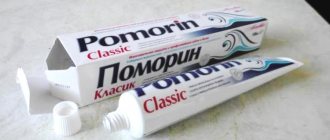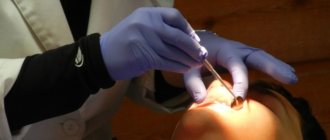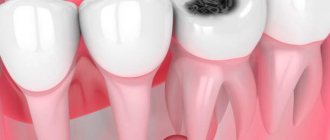We are always ready to do everything possible to keep our skin beautiful, firm and elastic for longer. But poor facial skin condition does not always arise just like that. Most often, this tells us about our body, problems that have arisen that need to be urgently treated.
What can ruin your mood first thing in the morning? Puffiness on the face is not an independent disease. Swelling can indicate various problems with the body. Fluid is retained in the facial tissues, resulting in swelling on the face. Almost every person experiences this condition, but it can go away after 10 minutes. And there are people whose swelling remains for a longer time. Then you should think about it and immediately contact a specialist.
Pathogenesis of renal edema
The mechanism of formation of renal edema is associated with the following phenomena in nephrological patients:
- massive loss of protein in urine;
- decrease in plasma albumin concentration;
- hyperlimidemia;
- increased movement of fluid from the intravascular space.
Patients have a high ratio of sodium and potassium in the urine, which indicates an imbalance of water and electrolyte balance.
The mechanism for the appearance of such a symptom is still not fully understood, but the characteristic picture indicates to the doctor pyelonephritis, glomerulonephritis. Filtration and excretion of urine are also impaired with kidney cysts, benign or malignant neoplasms.
Surgical methods - in case of emergency
Surgery will be necessary if there is an open fracture, ligament damage or severe injury. Panaritium can also serve as an indication for surgical intervention. To cope with this disease, it is imperative to eliminate the inflamed area with pus, thoroughly clean the cavity with the infection and apply stitches. After surgery, it is necessary to do dressings, take antibiotics and anti-inflammatory drugs.
Surgery may be required if the cartilage and surfaces of the joints are severely damaged in the later stages of arthritis or arthrosis, and the fingers become swollen, stiff, and painful. In especially severe cases, endoprosthetics is prescribed, when a worn-out joint is replaced with an artificial one.
Surgery may be performed in the presence of a malignant tumor. The oncologist prepares an individual therapy program for each patient.
Characteristics of edema of renal origin
Diseases of the urinary system are accompanied by edema with the following features:
- rapid swelling - in less than a day;
- the greatest intensity is on the face, under the eyes, on the arms and legs, and on the abdominal wall;
- when changing posture and active movement, the fluid shifts;
- the surface of the edematous skin is soft and pale.
Swelling of renal origin first appears on the face in the morning, but in acute pathologies and advanced chronic stages the patient may suffer from swelling around the clock.
What pathologies can cause swelling of the legs?
The first thing you should pay attention to is the kidneys.
It is this organ that needs to be examined initially, since the kidneys, due to disturbances in natural functions caused by various diseases, are simply not able to cope with the processing of large amounts of fluid entering the body. As a result, fluid is retained in the extremities.
Rheumatism and other diseases that have a devastating effect on the joints can cause circulatory problems.
This most often occurs due to inflammation of the joint capsule, which creates excessive pressure on the diseased joint.
If the foot is swollen and red, this may indicate the presence of pathologies in the functioning of the cardiovascular system. Swelling occurs because the heart cannot cope with the load. As a result, blood and lymph stagnate in the lower extremities while blood pressure decreases.
Hormonal imbalances and liver diseases provoke improper metabolism, which leads to deterioration in fluid absorption.
Varicose veins also lead to fluid stagnation in the legs. This is due to insufficient elasticity of blood vessels.
However, in this case, swelling of the legs is observed only in the evening; it goes away in the morning.
How to distinguish cardiac edema from renal edema
Swelling in diseases of the heart and blood vessels develops slowly - from several weeks to 2-3 months. Especially noticeable in the evening. First it appears on the legs and lower abdomen, the next stage is swelling of the abdominal cavity and enlargement of the liver, noticeable upon palpation of the abdomen.
Renal edema is typically localized on the face; as the disease progresses, it spreads to the extremities. The contour of the face sags and shifts, the skin becomes loose, and under the eyes it becomes bluish. The liver is not enlarged. Reliable differential diagnosis can only be carried out by a qualified doctor during an examination.
Causes of edema and how to deal with them
30.09.2021
The causes of edema are not heart disease , as many believe. On the contrary, the edema causes diseases of these organs. The accumulation and poor removal of excess fluid from the body occurs due to the thickening of salts and toxins in the tissues where these edemas . In these places the accumulation of toxic substances is maximum.
What is edema?
This is accumulated fluid (water) in some place in the body. But this is not just water, but with other substances dissolved in it, mostly toxic. Blood is also water, with the formed elements it contains: red blood cells, white blood cells, hormones , enzymes, nutrients. They are transported by blood into tissues. Arterial blood , and it flows through the venous and lymphatic systems. If there is swelling in any part of the body, then this is a violation of the outflow of blood through the network of capillaries of the lymphatic system. The outflow of blood occurs through the muscles and diaphragm.
It is known that toxic substances come out through sweat, urine , feces, and through the lungs . Therefore, while athletes are engaged in sports, they look good, since their muscles work regularly. If toxins are not eliminated, they form swelling.
Causes of edema.
There are several reasons for the appearance of swelling.
1. Accumulation of salts in the soft tissues of the body. It begins where blood and lymph outflow are worst. Accumulated salt draws water onto itself. It all starts with the feet and legs . 2. Insufficient muscle activity , slagging. If there is swelling in the legs , it means that waste has appeared in the calf muscles. 3. Poor diaphragm performance . At night, the muscles do not work, they rest. If a person has an excess of toxins, then the lymph cannot cope with their removal and swelling . 4. Allergic reactions . When allergies , histamine is released, through which fluid is released into the body tissues. Accumulation occurs where the allergen .
How to get rid of swelling?
To get rid of edema , you need to create an alkaline environment on the surface of the skin where there is edema . You can take one and a half or two teaspoons of table salt per glass of boiling water, stir until the soda is quenched. Only baking soda produces alkali. Wet a cloth with this solution, put it on your leg or arm, and cover it with a dry cloth on top and fix the soda compress in this way. Leave it overnight. This procedure must be done until the swelling . If the swelling is not advanced, it will help the first time.
Stagnation of waste in the calf muscles is removed very simply. You need to stretch your calf muscles, but without much effort. Stretching will improve the functioning of lymph in the lower extremities and relieve swelling. Also, to get rid of edema, it is necessary to restore breathing through the diaphragm. To do this, it is recommended to do exercises on the diaphragm in the morning and evening, that is, breathe with the stomach . To do this, you should lie on your back , put one hand on your chest , the other on your stomach , and as you inhale, watch your hand; at the peak of inhalation, you hold your breath. As you exhale, the hand lowers with the stomach down.
Breathing training helps improve blood circulation and fills the body with air. If the swelling is caused by an allergy , you should immediately take an antihistamine (tablets, drops, ointments) and consult a doctor .
Prevention of swelling.
In order not to expose the body to water attack and stagnation of toxins, a number of recommendations should be followed. Naturally, watch your diet, do not take in large quantities of salted and smoked foods, drink more clean water. It is also worth monitoring the amount of fluid you drink and the amount of urine per day. If urine comes out than fluid taken in, there is a risk of edema . Be sure to exercise, depending on your health condition. Running, walking, and swimming are excellent preventative measures against this disease.
Thus, in order to prevent edema processes, you should eat right, do not overuse liquids at night, and do physical exercise. Quite simple rules, but very useful and easy to follow.
Published in Articles without category Premium Clinic
Associated symptoms
Diagnosis of renal edema begins with an assessment of the clinical picture. For the urological profile of the disease, it includes the following complaints:
- difficulty urinating;
- lower back pain – shooting and pulling;
- decreased daily urine volume;
- weakness, lethargy.
Laboratory diagnostic results indicate proteinuria, changes in sodium and potassium levels. Daily samples show a reduced volume of diuresis.
Why does my cheek swell after implantation?
Tissue swelling after surgery is nothing more than the activation of the body’s immune system, which seeks to restore the damaged area. In the area of invasive manipulations, the blood supply to the vessels increases and intercellular fluid accumulates. Gradually these phenomena pass.
But the cheek does not always increase in size after installation of the implant. If the dentist installs only one artificial root, then there may be no swelling. When carrying out the so-called bloodless dental implantation, through punctures of the gums, trauma is also minimal. Therefore, the cheek swells less often. But if the wound surface is extensive, since a large mucoperiosteal flap was cut and peeled off, then swelling after the operation is quite expected.
How to prevent pathological swelling after implant installation?
The following recommendations will help you avoid complications:
- Do not neglect cold compresses on the first day after surgery.
- It is important to take the medications prescribed by your dentist according to the prescribed regimen, without changing the dosage.
- To brush your teeth, use a soft brush without touching the wound.
- You should avoid stress, overload, temperature changes, and airplane flights.
Patients who follow the instructions and follow the doctor’s warnings are less likely to experience complications after implantation, and cheek swelling goes away much faster.
When can swelling be considered physiological?
As a rule, the patient notices swelling of the cheek within the first two to three hours after completion of surgical procedures. Swelling may be accompanied by pain, fever and last up to five to seven days. At the same time, starting from the third day, the swelling of the cheek begins to subside as the tissues heal. By the end of the first week, the size and proportions of the face are restored. This course of events is considered physiological and corresponds to the norm.
The healing and recovery process may take longer when multiple implants are installed or combined procedures are performed, such as bone augmentation. If the patient’s general condition is not impaired, then longer-term swelling of the cheek should not cause concern. But the final conclusion must be made by the dentist.
How to reduce cheek swelling?
To quickly relieve swelling and reduce discomfort, your doctor may recommend:
- take antibacterial, analgesic, anti-inflammatory, antihistamine medications;
- apply cold compresses with ice according to the specified scheme, for example, seven to ten minutes with three to five minute breaks;
- exclude hard, hot, salty, spicy foods from the diet;
- Avoid hot baths, saunas and swimming pools.
It is also helpful to sleep with your head elevated on the side opposite the surgical site to reduce swelling.










